To Boldy Shojo Where No TWIA Has Before – This Week in Anime
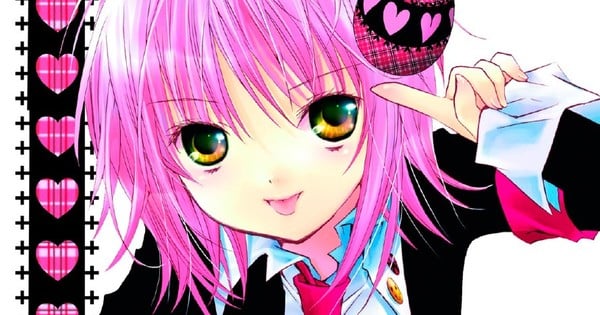
From Shugo Chara! to Hot Gimmick, Chris and Steve decide to throw Rebecca a bone by looking at the shojo manga bundle offered by HumbleBundle.
Disclaimer: The views and opinions expressed by the participants in this chatlog are not the views of Anime News Network.
Spoiler Warning for discussion of the series ahead.
Chris, it finally happened. I bankrupted myself by buying too many eggs. That’s the 2025 economy for you. Now, how could I afford shojo manga?
© 2006 PEACH-PIT; English translation copyright © 2007, 2013 PEACH-PIT
I’d offer you a nice egg in these trying times, but that’s how you wound up in this situation. Instead, if it’s shojo specifically you’re looking for, great news: perennial deal-slinging website (and reason so many of our Steam libraries are bloated) HumbleBundle is offering a big batch of material from the genre! At as little as one whole dollar for the first volumes of the series featured, that’s cheaper than a pack of eggs even back in the day, and probably one we can finesse expensing to Daddy Kadokawa.
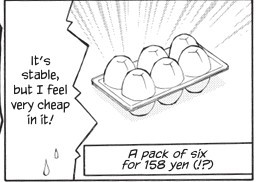
© Shugo Chara! volume 1 copyright © 2006 PEACH-PIT English translation copyright © 2007, 2013 PEACH-PIT
Also, we’ve put Rebecca through so much; this is as good a reason as any to spend a column chatting about shojo as a genre, like she’s so subtly asked us to.

© 2006 PEACH-PIT; English translation copyright © 2007, 2013 PEACH-PIT

© Shugo Chara! volume 1 copyright © 2006 PEACH-PIT English translation copyright © 2007, 2013 PEACH-PIT
Not that said grounded romance is entirely the case, as seen in the first egg-cellent series we started talking about here. Shugo Chara! is, indeed, a magical girl series, with its own adventurous spins on top of some romantic maneuverings just getting going in the first volume.
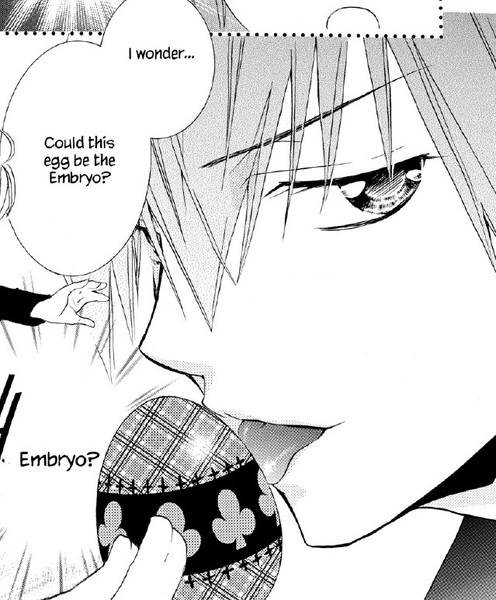
© 2006 PEACH-PIT; English translation copyright © 2007, 2013 PEACH-PIT
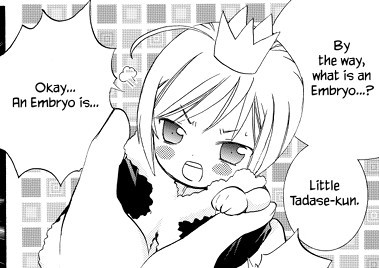
© Shugo Chara! volume 1 copyright © 2006 PEACH-PIT English translation copyright © 2007, 2013 PEACH-PIT

© Shugo Chara! volume 1 copyright © 2006 PEACH-PIT English translation copyright © 2007, 2013 PEACH-PIT
Shugo Chara!‘s take on magical girls definitely feels like playing around with the possibilities of the genre as it was in then-contemporary 2006. Amu’s “transformations” as alternate aspirational personalities inform a lot of her interactions with characters as she figures out the story and herself. Any magical combat or battles are more brief and incidental for now.

© 2006 PEACH-PIT; English translation copyright © 2007, 2013 PEACH-PIT
I also want to say I love every single fashion choice made here. Peach-Pit are visionary.

© 2006 PEACH-PIT; English translation copyright © 2007, 2013 PEACH-PIT
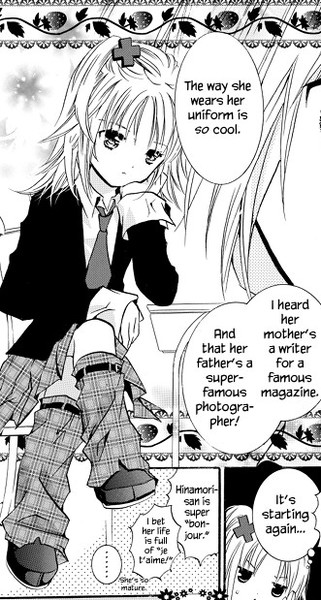
© Shugo Chara! volume 1 copyright © 2006 PEACH-PIT English translation copyright © 2007, 2013 PEACH-PIT
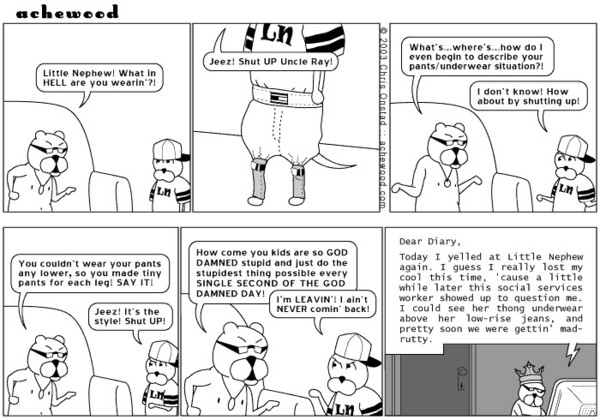
Peach-Pit are creators worth getting a column to themselves (I know readers are aching for our hot takes on the recently rereleased DearS). I also love the way they describe themselves in the author’s notes of this volume.

© Shugo Chara! volume 1 copyright © 2006 PEACH-PIT English translation copyright © 2007, 2013 PEACH-PIT
With Shugo Chara! itself, I can see a lot of the appeal in the setup even if it’s so full of components that its eggshell feels ready to burst. It’d have been nice to get a better idea of what the different little character sprites could do or how their personality switches could affect Amu. But I guess that’s what going back and buying the further volumes in that bundle is for. I can at least enjoy recognizing its standby genre ideas, like an antagonistic potential danger boyfriend who, for me, calls to mind Quiche from Tokyo Mew Mew.

© Shugo Chara! volume 1 copyright © 2006 PEACH-PIT English translation copyright © 2007, 2013 PEACH-PIT
Speaking of egg dishes.
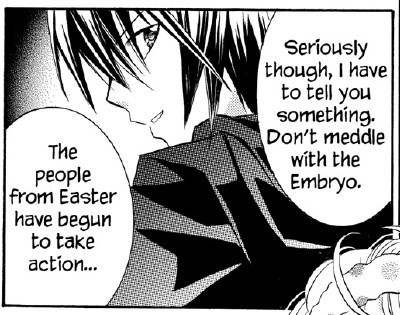
© 2006 PEACH-PIT; English translation copyright © 2007, 2013 PEACH-PIT
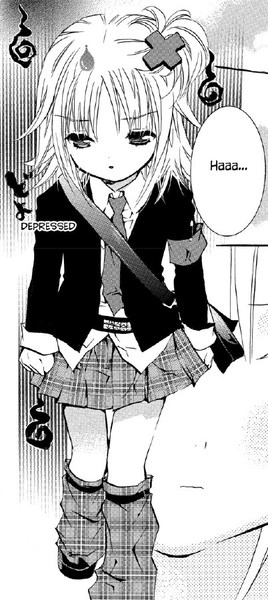
© 2006 PEACH-PIT; English translation copyright © 2007, 2013 PEACH-PIT
And that isn’t even all the egg action you get for a dollar. The bundle also includes the first volume of Shugo Chara-chan!, a yonkoma spinoff collection. It doesn’t really have a standalone appeal, but it’s a cute bonus.

© 2008 PEACH-PIT, Naphthalene Mizushima, Kinomin, Sakyou, Ema Toyama, Miyuki Eto and Yuriko Abe; English translation copyright © 2011 PEACH-PIT, Naphthalene Mizushima, Kinomin, Sakyou, Ema Toyama, Miyuki Eto and Yuriko Abe
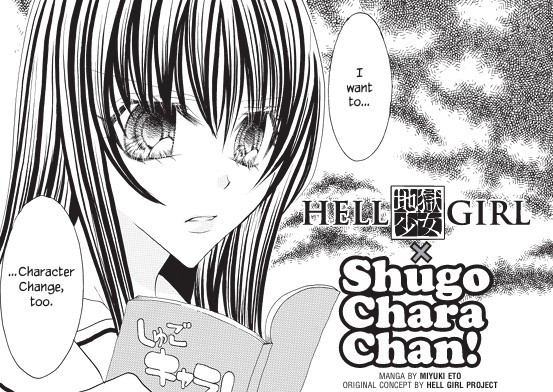
© Shugo Chara Chan! volume 1 copyright © 2008 PEACH-PIT, Naphthalene Mizushima, Kinomin, Sakyou, Ema Toyama, Miyuki Eto and Yuriko Abe English translation copyright © 2011 PEACH-PIT, Naphthalene Mizushima, Kinomin, Sakyou, Ema Toyama, Miyuki Eto and Yuriko Abe
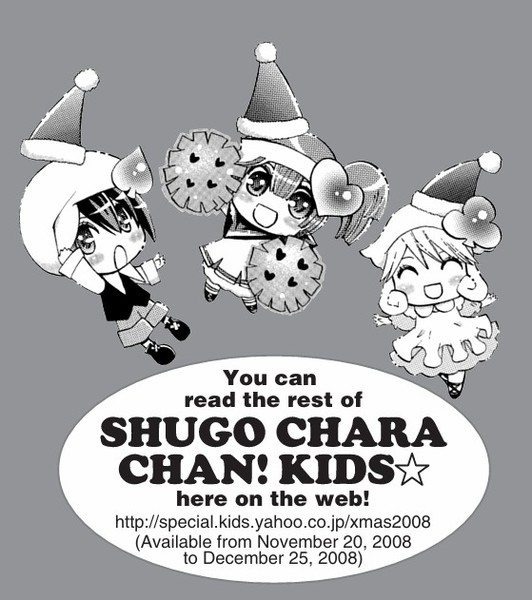
© Shugo Chara Chan! volume 1 copyright © 2008 PEACH-PIT, Naphthalene Mizushima, Kinomin, Sakyou, Ema Toyama, Miyuki Eto and Yuriko Abe English translation copyright © 2011 PEACH-PIT, Naphthalene Mizushima, Kinomin, Sakyou, Ema Toyama, Miyuki Eto and Yuriko Abe
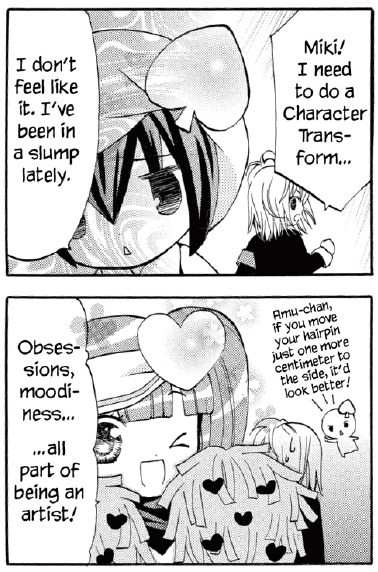
© 2008 PEACH-PIT, Naphthalene Mizushima, Kinomin, Sakyou, Ema Toyama, Miyuki Eto and Yuriko Abe; English translation copyright © 2011 PEACH-PIT, Naphthalene Mizushima, Kinomin, Sakyou, Ema Toyama, Miyuki Eto and Yuriko Abe

© Peach Girl volume 1 copyright © 1998 Miwa Ueda English translation copyright © 2018 Miwa Ueda

© 1998 Miwa Ueda; English translation copyright © 2018 Miwa Ueda

© Peach Girl volume 1 copyright © 1998 Miwa Ueda English translation copyright © 2018 Miwa Ueda
Even as removed as the societal opinions of Japan in 1997 could be, I think Peach Girl does a good job of demonstrating why Momo specifically has such a tumultuous relationship with her massive amounts of melatonin. Several of these shojo volumes deal with girls grappling with social judgments for their looks, and I like how Momo lets herself hit back. Often with a mean right hook.
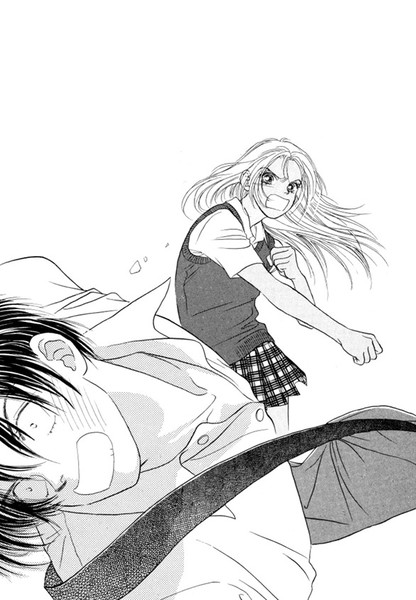
© Peach Girl volume 1 copyright © 1998 Miwa Ueda English translation copyright © 2018 Miwa Ueda
Don’t know why I never got around to reading this series back in the day, Momo rules.

© 1998 Miwa Ueda; English translation copyright © 2018 Miwa Ueda
I wouldn’t call the manga perfect in its handling of this, but I’m relieved that Miwa Ueda at least understands that Momo’s skin color isn’t a problem that needs to be solved (and given her author’s comments, it sounds like she speaks from her own experiences on the swim team).

© 1998 Miwa Ueda; English translation copyright © 2018 Miwa Ueda
For the record, I cannot speak from my experience on any of this. I’m so pale that I skip the tanning stage entirely and go straight to sunburn (picture related).
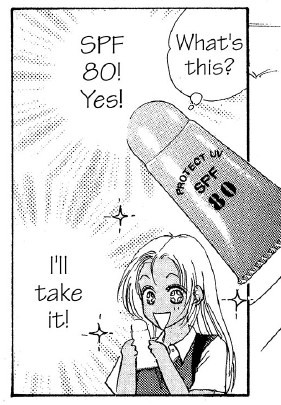
© 1998 Miwa Ueda; English translation copyright © 2018 Miwa Ueda
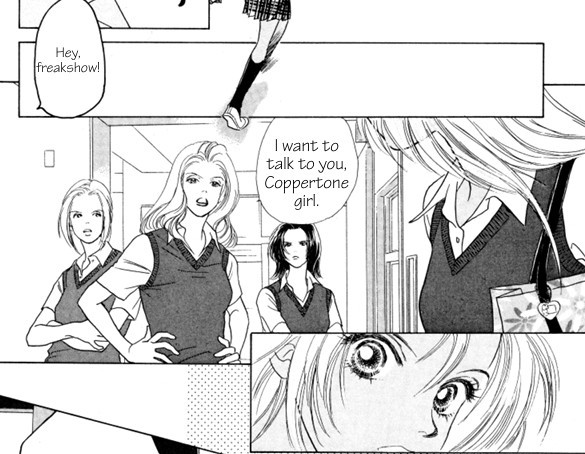
© Peach Girl volume 1 copyright © 1998 Miwa Ueda English translation copyright © 2018 Miwa Ueda
The societal judgements are the background radiation of Momo’s issues, but it’s not helped that her immediate circle of acquaintances foments her body-image problems in the foreground. A huge part of her disdain for her skin tone comes from a past apparent misunderstanding with her childhood friend/crush. And that misunderstanding is further propagated by her awful “friend” Sae.

© Peach Girl volume 1 copyright © 1998 Miwa Ueda English translation copyright © 2018 Miwa Ueda
Sae is, frankly, incredible, by the way. I love any romance antagonist who reaches mustache-twirling levels like this.
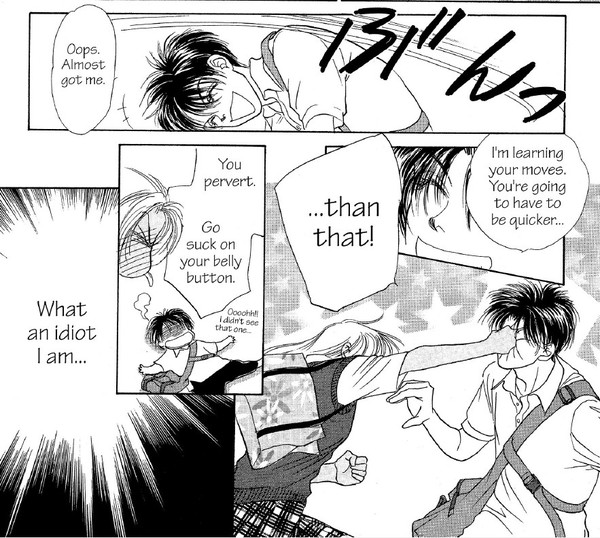
© 1998 Miwa Ueda; English translation copyright © 2018 Miwa Ueda

© Peach Girl volume 1 copyright © 1998 Miwa Ueda English translation copyright © 2018 Miwa Ueda
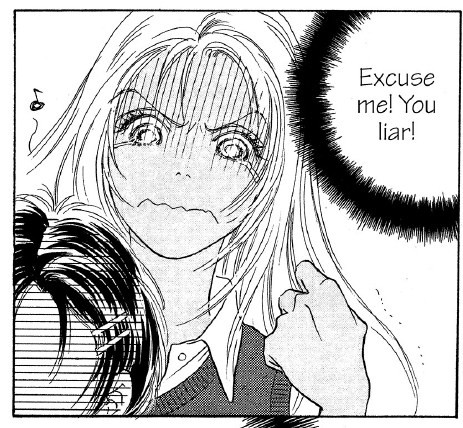 © 1998 Miwa Ueda; English translation copyright © 2018 Miwa Ueda |
 © 1998 Miwa Ueda; English translation copyright © 2018 Miwa Ueda |
 © 1998 Miwa Ueda; English translation copyright © 2018 Miwa Ueda |
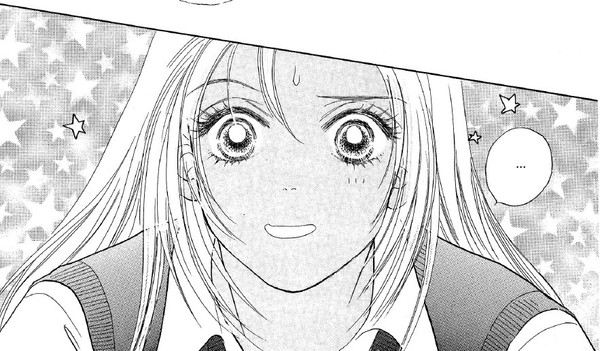 © 1998 Miwa Ueda; English translation copyright © 2018 Miwa Ueda |
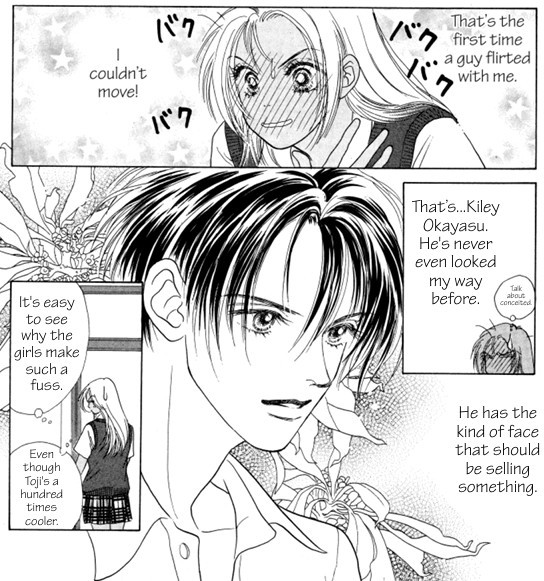
© Peach Girl volume 1 copyright © 1998 Miwa Ueda English translation copyright © 2018 Miwa Ueda
It was good to go to Peach Girl, I think, before I looked over the other romance entries on this list, since as one of the older series in the set, it demonstrated for me a lot of the tropes and typicalities that shojo romance manga have been dealing in over the decades—multiple degrees of misunderstandings and dudes who occupy various points on the asshole-to-heart-of-gold spectrum.
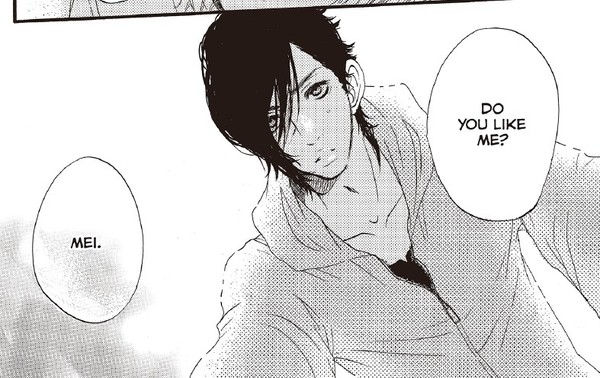
© 2008 Kanae Hazuki; English translation copyright © 2014 Kanae Hazuki
This dude was born to be a Myspace profile picture.
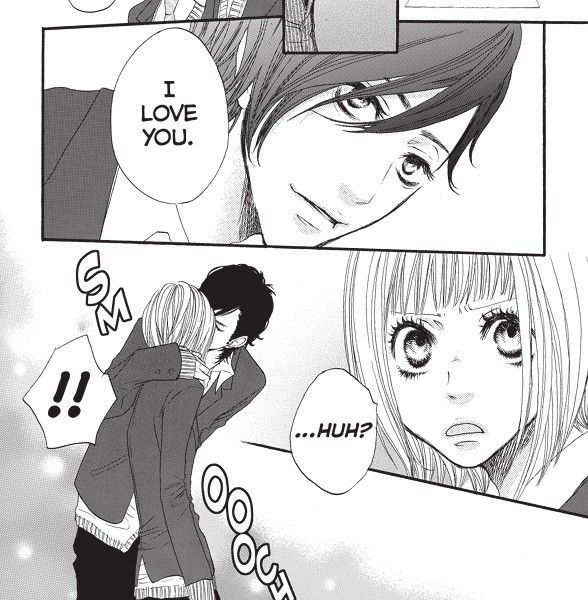
© Say I Love You. volume 1 copyright © 2008 Kanae Hazuki English translation copyright © 2014 Kanae Hazuki
Say I Love You. shares what I clocked as quite a few structural signifiers with multiple manga in this bundle. You’ve got a socially struggling girl who incidentally interacts with the hottest dude in school, who turns out to be more sensitive than you might expect. It’s sort of shojo‘s version of a seemingly powerless shonen hero who finds out he actually has the strongest power—except this genre’s leaning toward reality lets it feel rooted in the (often directly described) real backgrounds of its creators. And given the preponderance of bad boys in some of these spaces, it’s nice to have some more genuine guys, and also still have them get kicked in the face sometimes.

© Say I Love You. volume 1 copyright © 2008 Kanae Hazuki English translation copyright © 2014 Kanae Hazuki
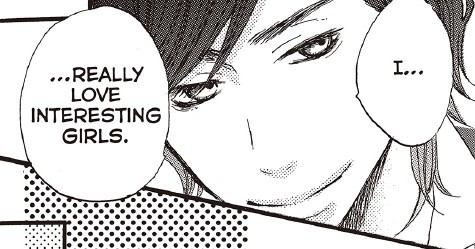
© 2008 Kanae Hazuki; English translation copyright © 2014 Kanae Hazuki
In Say I Love You.‘s specific instance, many of the scenes between Mei and Yamato are really funny. They have a compelling rapport.
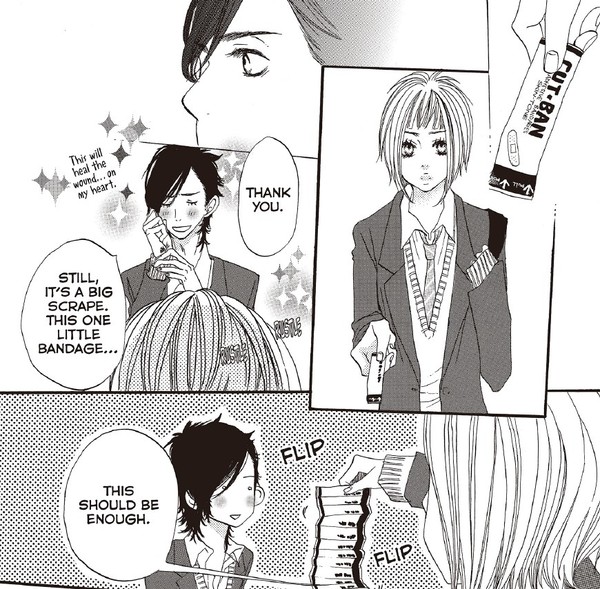
© 2008 Kanae Hazuki; English translation copyright © 2014 Kanae Hazuki
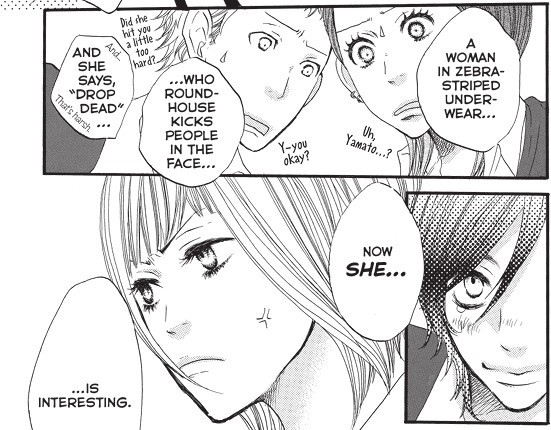 © Say I Love You. volume 1 copyright © 2008 Kanae Hazuki English translation copyright © 2014 Kanae Hazuki |
 © Say I Love You. volume 1 copyright © 2008 Kanae Hazuki English translation copyright © 2014 Kanae Hazuki |
I like how this series, and others in this bundle, make romance work as a driving narrative thrust not necessarily from wanting to see characters get together, but from wanting to see their relationships help them grow as people, regardless of whether they stay together. Mei’s learning to trust people more from her interactions with Yamato, and she likewise wants to see her classmate Asami overcome societal judgements about her body (for another Peach Girl parallel).
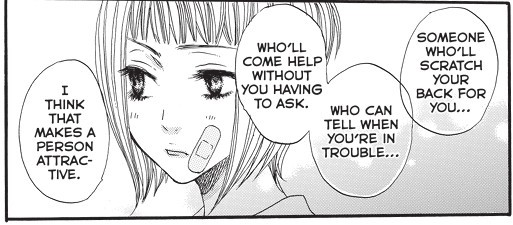 © Say I Love You. volume 1 copyright © 2008 Kanae Hazuki English translation copyright © 2014 Kanae Hazuki |
 © Say I Love You. volume 1 copyright © 2008 Kanae Hazuki English translation copyright © 2014 Kanae Hazuki |
The romance can move incrementally, a slow burn, as these are wont to be, but like you said, many of the interactions are charming enough that they carry it.

© 2008 Kanae Hazuki; English translation copyright © 2014 Kanae Hazuki
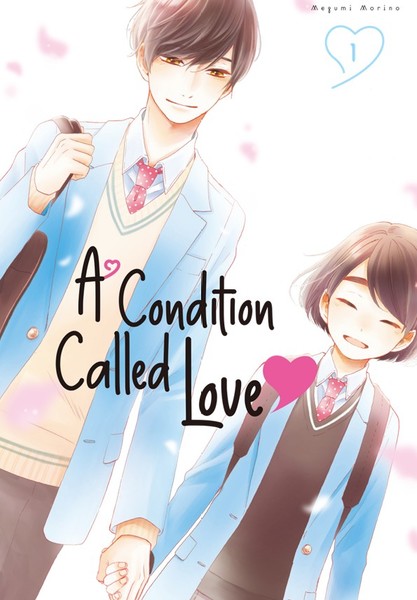
© A Condition Called Love 1 copyright © 2018 Megumi Morino English translation copyright © 2020 Megumi Morino
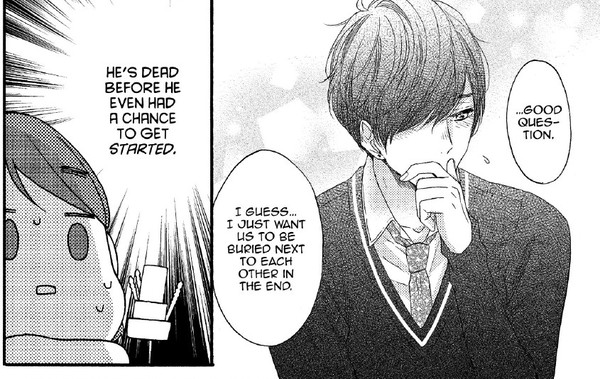
© 2018 Megumi Morino; English translation copyright © 2020 Megumi Morino
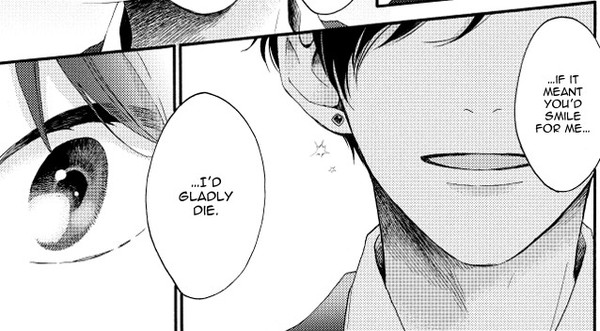
© A Condition Called Love 1 copyright © 2018 Megumi Morino English translation copyright © 2020 Megumi Morino
This is a case where I could enjoy the seeming sensitivity and funny excesses of Hotboy McPopularguy as he was attentive to Hotaru in this first volume, while alarm bells were also ringing about how he might get down the line in future volumes.
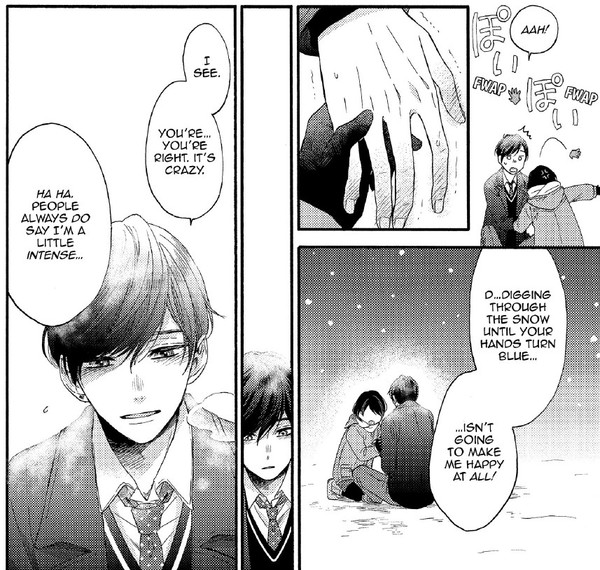
© 2018 Megumi Morino; English translation copyright © 2020 Megumi Morino

© A Condition Called Love 1 copyright © 2018 Megumi Morino English translation copyright © 2020 Megumi Morino
Speaking to the modernity of A Condition Called Love, it feels like current mystery-box style writing as applied to a shojo love interest, and in practice means that I have less idea of who Hananoi is as a person compared to the likes of the aforementioned Kiley and Yamato.
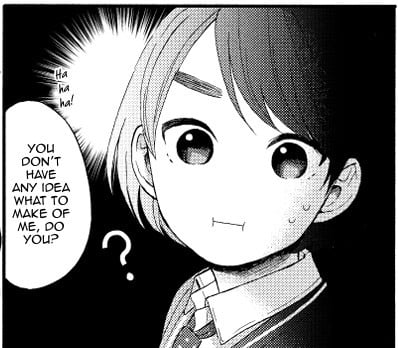
© A Condition Called Love 1 copyright © 2018 Megumi Morino English translation copyright © 2020 Megumi Morino
At least Hotaru carries things a bit with her own brand of funny little face game.

© A Condition Called Love 1 copyright © 2018 Megumi Morino English translation copyright © 2020 Megumi Morino

© 2018 Megumi Morino; English translation copyright © 2020 Megumi Morino
I also like the one rather raw look we got into Hananoi’s interiority, when he talked about the intensity of his feelings compared to Hotaru’s more tepid curiosity. That, to me, is a compelling contrast, and I think that’s the nugget the manga should dig into more.
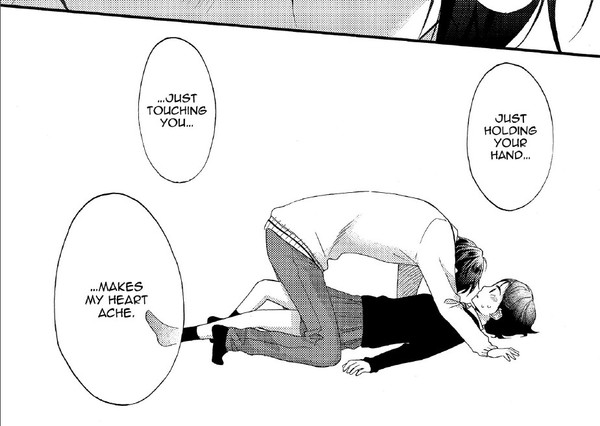
© 2018 Megumi Morino; English translation copyright © 2020 Megumi Morino
Alternatively, give Hotaru more foreign cuisine to salivate over.

© 2018 Megumi Morino; English translation copyright © 2020 Megumi Morino
I can absolutely agree with food being part of the lexicon of her love language. Turns out there’s plenty to relate to in these shojo manga!

© 1996 Fuyumi Soryo; English translation copyright © 2019 Fuyumi Soryo
Turns out: not a lot of space travel in this one. It does, however, have my other obsession of choice: over-the-top melodrama.

© MARS volume 1 copyright © 1996 Fuyumi Soryo English translation copyright © 2019 Fuyumi Soryo
It’s distinguished by the aforementioned melodrama and a serious motorcycle racing fandom. It’s endearingly funny every time Fuyumi Sōryō shifts into near-edutainment on the subject of this motorsport.
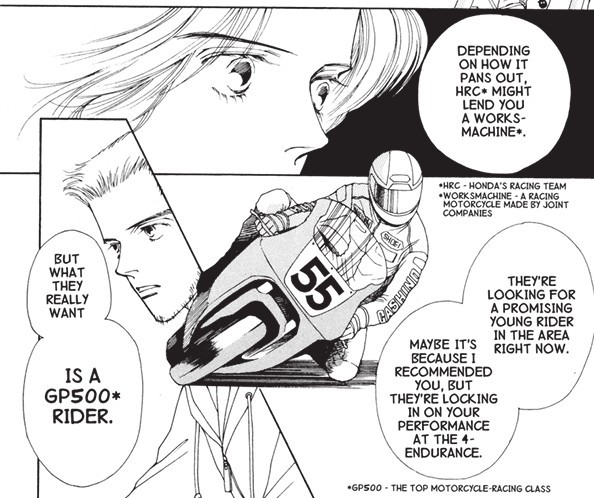
© MARS volume 1 copyright © 1996 Fuyumi Soryo English translation copyright © 2019 Fuyumi Soryo
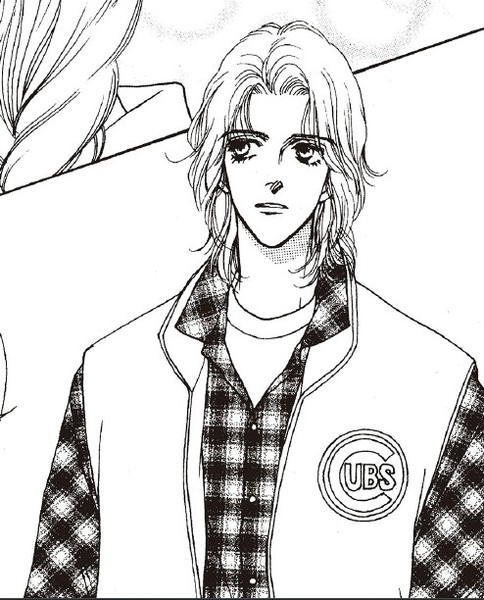 © 1996 Fuyumi Soryo; English translation copyright © 2019 Fuyumi Soryo |
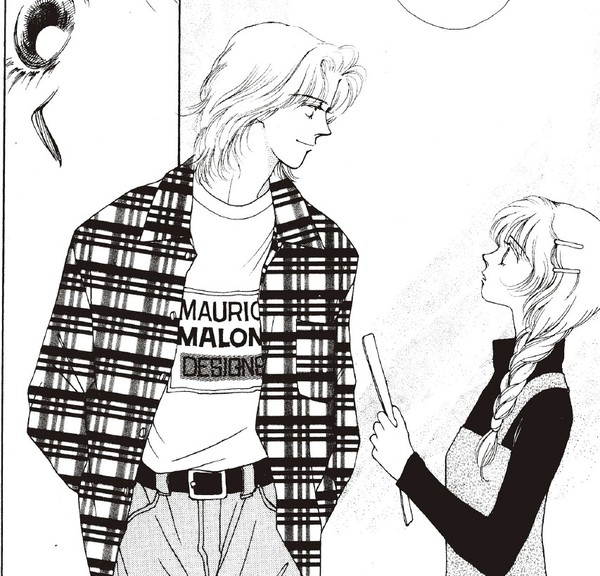 © 1996 Fuyumi Soryo; English translation copyright © 2019 Fuyumi Soryo |
 © 1996 Fuyumi Soryo; English translation copyright © 2019 Fuyumi Soryo |
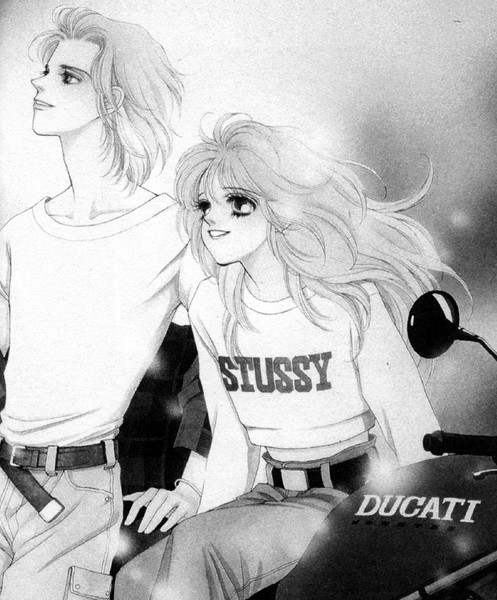 © 1996 Fuyumi Soryo; English translation copyright © 2019 Fuyumi Soryo |
[bites my tongue to stop myself from making a “stussy” joke]

© MARS volume 1 copyright © 1996 Fuyumi Soryo English translation copyright © 2019 Fuyumi Soryo

© MARS volume 1 copyright © 1996 Fuyumi Soryo English translation copyright © 2019 Fuyumi Soryo
Of all the guys and their layered constructions of charm points as the primary love interests of these manga, I think Rei hits the mark the hardest as a complexly attractive prospect. He’s genuinely cool, and in this first volume, he comes with just enough tortured mystery behind him to make you, the reader, believe you could fix him as well as Kira seems to be.

© MARS volume 1 copyright © 1996 Fuyumi Soryo English translation copyright © 2019 Fuyumi Soryo
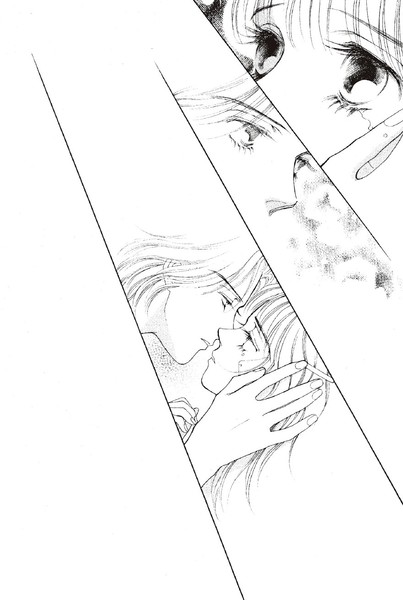
© 1996 Fuyumi Soryo; English translation copyright © 2019 Fuyumi Soryo
Mars also executes its tropes a cut above the rest. Like, both Peach Girl and Say I Love You. feature a scene where the heroine is sexually harassed or threatened, in response to which the asshole with a heart of gold rescues her. Mars‘ iteration of that, however, feels the most genuinely skin-crawling.
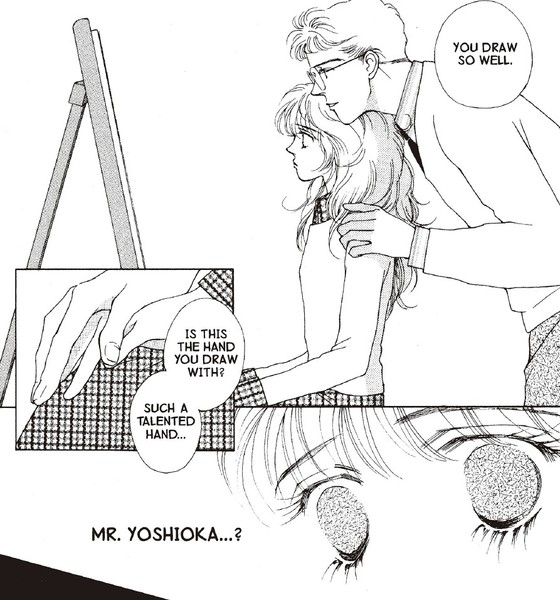
© 1996 Fuyumi Soryo; English translation copyright © 2019 Fuyumi Soryo

© MARS volume 1 copyright © 1996 Fuyumi Soryo English translation copyright © 2019 Fuyumi Soryo
As we’ve reviewed, that point comes up a lot in these comics.
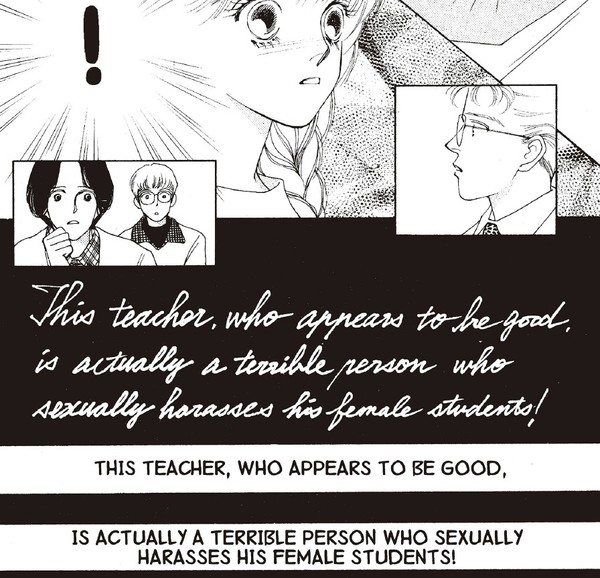
© 1996 Fuyumi Soryo; English translation copyright © 2019 Fuyumi Soryo
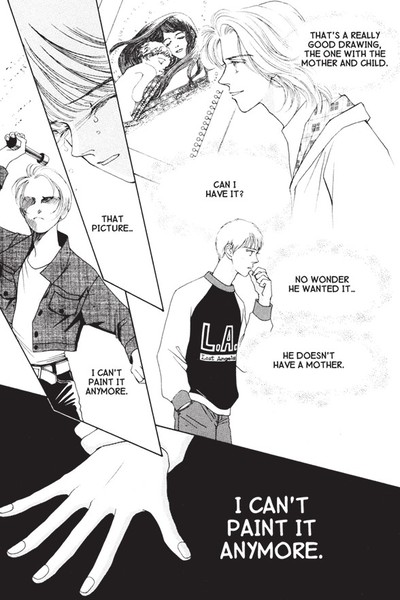
© MARS volume 1 copyright © 1996 Fuyumi Soryo English translation copyright © 2019 Fuyumi Soryo
Also, confirmation that Rei has mommy issues. Because of course.

© 1996 Fuyumi Soryo; English translation copyright © 2019 Fuyumi Soryo
But seriously, that commitment to its exaggerated version of reality lets Mars get away with florid lines like Kira comparing a motorcycle’s engine to the sound of crying. I never could have come up with this. I love it.
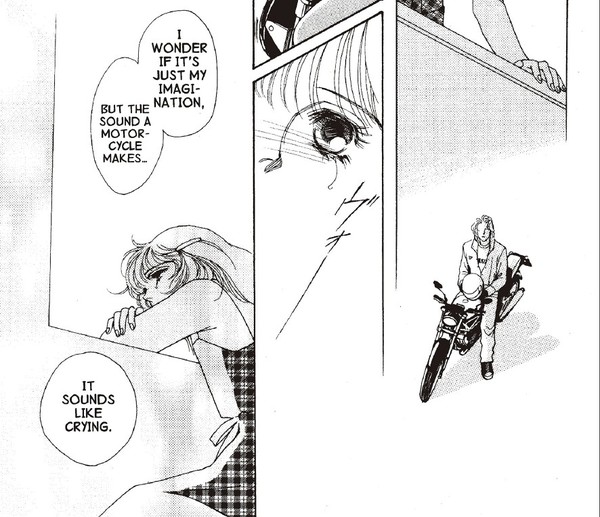
© 1996 Fuyumi Soryo; English translation copyright © 2019 Fuyumi Soryo

© MARS volume 1 copyright © 1996 Fuyumi Soryo English translation copyright © 2019 Fuyumi Soryo
Which makes it a shame that shojo remains so unrepresented when it comes to anime adaptations. I’d agree that Mars had the most juice out of all of the titles in that bundle, but it’s also the only one to never get an accompanying anime, so its footprint in wider Western spaces is practically nonexistent. I couldn’t even tell you how I originally heard about it. And I’m sure there are plenty of shojo titles I’ve never heard of that are as good or better.

© Izumi Tsubaki/SQUARE ENIX
Amen, Mr. Nozaki-kun. Hope you get a second season someday.
Which is to say, don’t worry shojo fans: I’m sure we’ll hit certified art like Hot Gimmick in the next batch we sample.

© 2001 Miki AIHARA/SHOGAKUKAN

© 2006 PEACH-PIT; English translation copyright © 2007, 2013 PEACH-PIT




